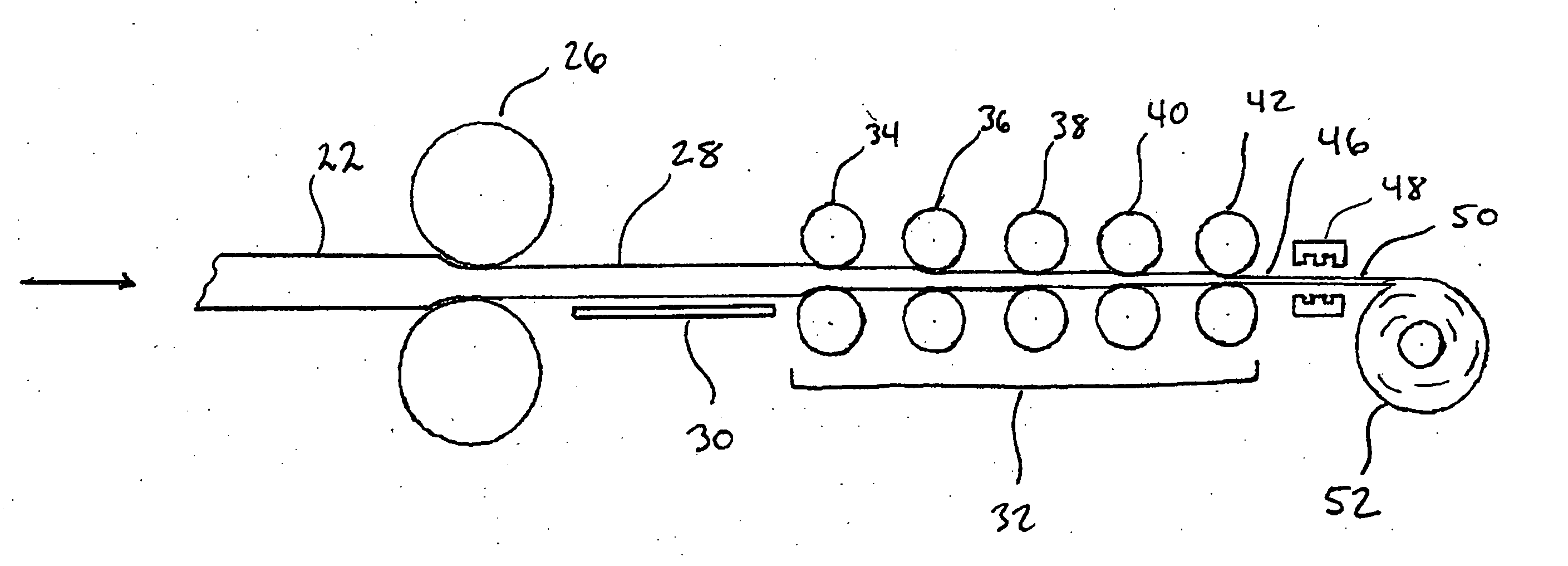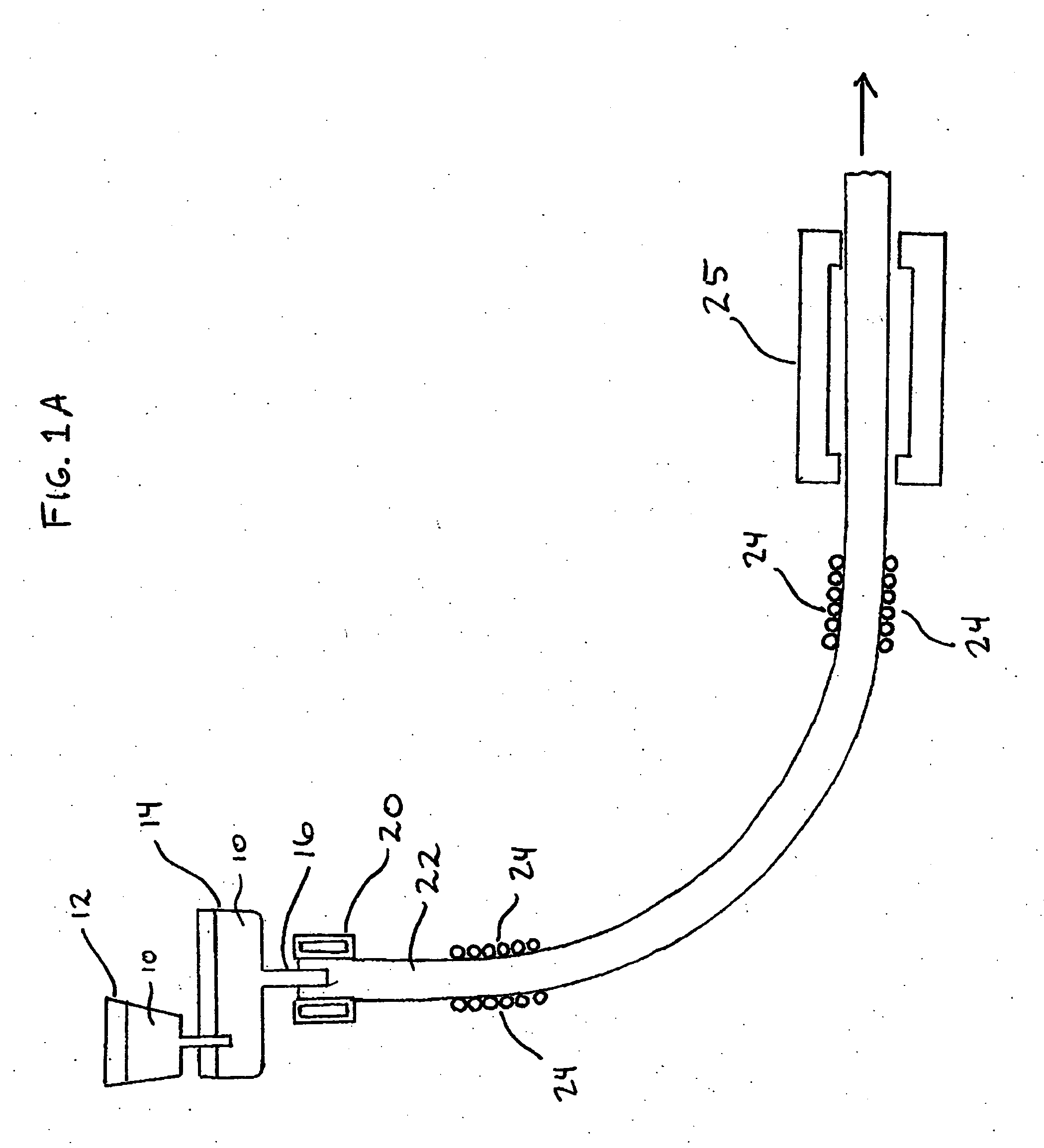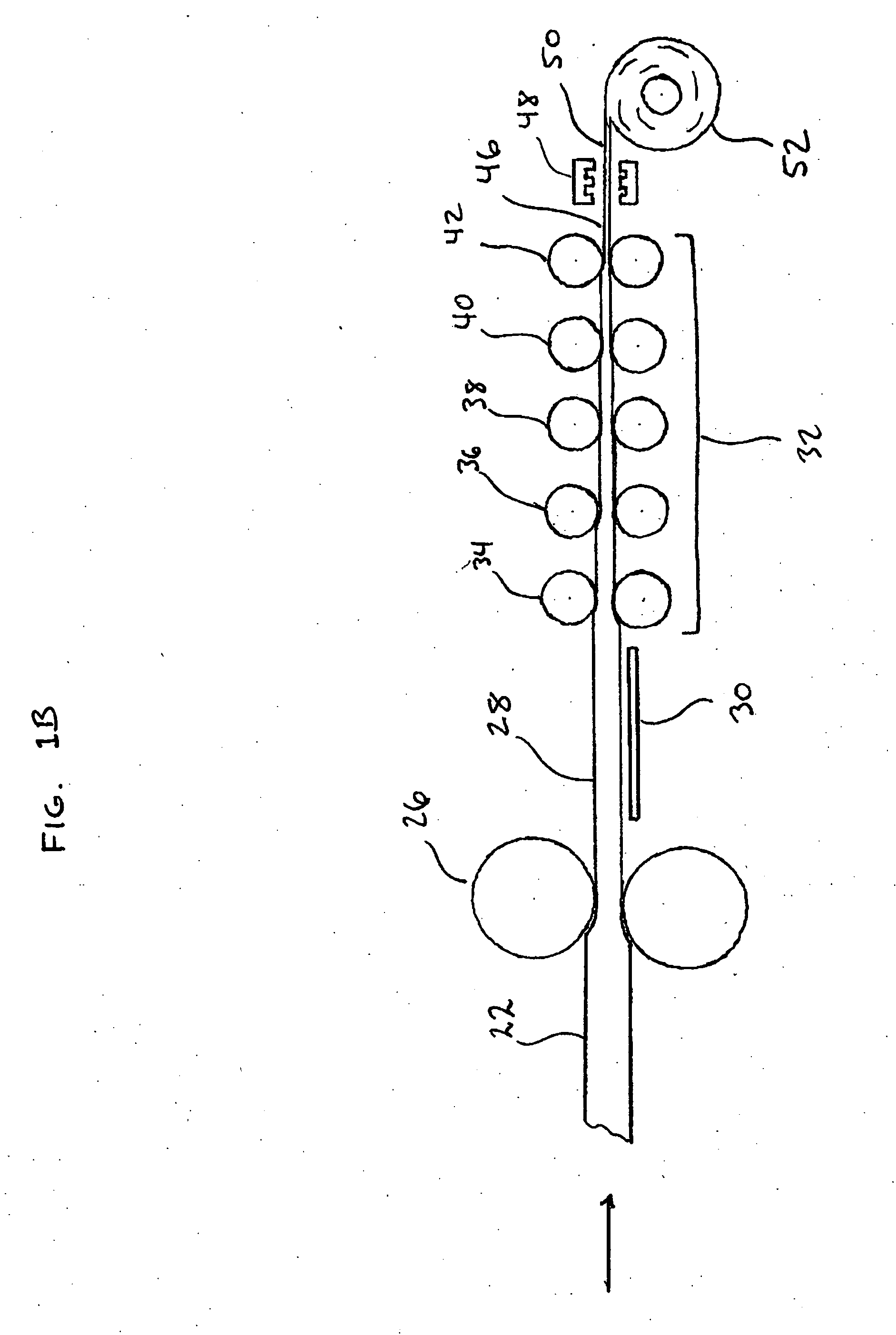High strength steel product with improved formability and steel manufacturing process
a technology of high strength steel and manufacturing process, applied in the field of high strength steel products, can solve the problems of material becoming harder, increasing the difficulty of further thickness reduction by rolling, and increasing the difficulty of material shaping
- Summary
- Abstract
- Description
- Claims
- Application Information
AI Technical Summary
Benefits of technology
Problems solved by technology
Method used
Image
Examples
Embodiment Construction
[0026] The process according to the present invention preferably utilizes many of the same process steps and apparatus as modern thin slab and medium slab processes for producing flat rolled steel products. Typical processes of this type utilize a furnace to produce molten steel, at least a portion of which may comprise scrap material. The molten steel is cast, preferably on a continuous basis, to produce a slab having a thickness of from about 30 to about 200 mm. According to the present invention, It is preferred that the hot as-cast slab is directly charged into a reheating or equalizing furnace to prevent excessive cooling. However, the process of the invention is also compatible with processes in which the as-cast slab is allowed to cool before further processing.
[0027] A preferred process and apparatus according to the present invention are schematically illustrated in FIG. 1. As in known thin slab and medium slab casting processes, molten steel 10 is produced in a furnace (n...
PUM
| Property | Measurement | Unit |
|---|---|---|
| thickness | aaaaa | aaaaa |
| thickness | aaaaa | aaaaa |
| thickness | aaaaa | aaaaa |
Abstract
Description
Claims
Application Information
 Login to View More
Login to View More - R&D
- Intellectual Property
- Life Sciences
- Materials
- Tech Scout
- Unparalleled Data Quality
- Higher Quality Content
- 60% Fewer Hallucinations
Browse by: Latest US Patents, China's latest patents, Technical Efficacy Thesaurus, Application Domain, Technology Topic, Popular Technical Reports.
© 2025 PatSnap. All rights reserved.Legal|Privacy policy|Modern Slavery Act Transparency Statement|Sitemap|About US| Contact US: help@patsnap.com



